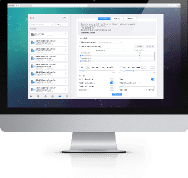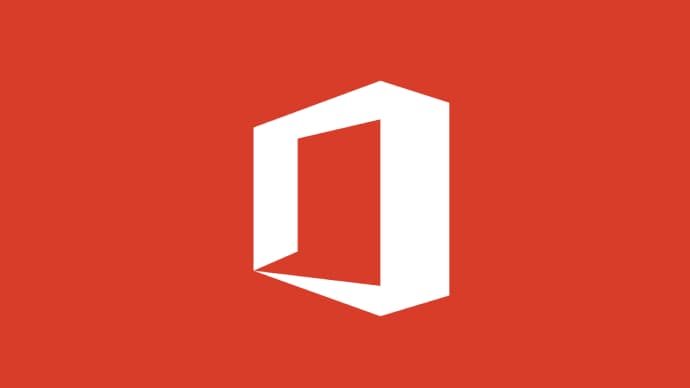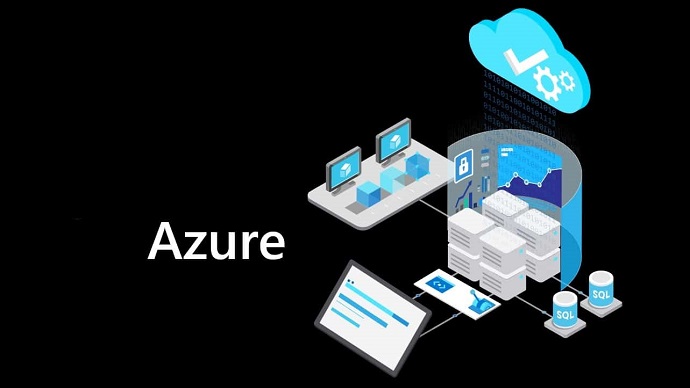Use VCE Exam Simulator to open VCE files

PCCET Palo Alto Networks Practice Test Questions and Exam Dumps
Question 1
Which analysis detonates previously unknown submissions in a custom-built, evasion-resistant virtual environment to determine real-world effects and behavior?
A. Dynamic
B. Pre-exploit protection
C. Bare-metal
D. Static
Correct Answer: A
Explanation
The type of analysis described in the question involves executing or "detonating" previously unknown submissions (such as files or applications) in a controlled environment to observe their behavior and potential real-world effects. This process is known as dynamic analysis.
Here’s a breakdown of each option:
Option A: Dynamic — Dynamic analysis is the correct answer. It involves executing or running the program in a virtual environment that simulates real-world conditions. This allows security tools to observe how the software behaves during execution, such as identifying malicious actions, data exfiltration attempts, or system changes. It is evasion-resistant because the environment is designed to detect malicious behavior that might try to hide itself in more static environments.
Option B: Pre-exploit protection — This option refers to the defensive measures taken before an exploit occurs, often through prevention mechanisms such as firewalls, intrusion detection systems, or antivirus software. It does not specifically involve detonating unknown submissions to observe real-world behavior, so it is not the correct answer.
Option C: Bare-metal — Bare-metal refers to running software directly on physical hardware, without a virtualized layer in between. Although this provides high performance, it is not a type of analysis. Instead, it’s a method of running systems and software. Bare-metal environments are not typically used for the kind of dynamic, controlled analysis described in the question.
Option D: Static — Static analysis involves examining code or files without executing them. It looks for known patterns, signatures, or vulnerabilities within the code, but it doesn’t involve running the program to observe its behavior. Since the question specifically asks about detonating submissions to observe behavior, static analysis is not the correct answer.
In conclusion, A. Dynamic analysis is the correct choice because it involves executing unknown submissions in a controlled, virtual environment to analyze their behavior and effects, helping to identify malicious activities and behaviors that could pose a threat in the real world.
Question 2
What must be in place for a SIEM system to function properly and enable the transfer of translated data from the target system to the SIEM's data repository?
A. connectors and interfaces
B. infrastructure and containers
C. containers and developers
D. data center and UPS
Correct Answer : A
Explanation:
To understand what is necessary for a Security Information and Event Management (SIEM) system to operate effectively, it's important to consider its core function. SIEM systems aggregate and analyze security-related data from across an organization's IT environment. This includes logs, alerts, and telemetry from various systems like firewalls, intrusion detection systems, antivirus tools, servers, and user devices. The SIEM does not directly access raw data without assistance; it requires certain tools and mechanisms to extract, transform, and transmit that data appropriately.
Connectors and interfaces are fundamental to making this process work. A connector is essentially a module, script, or software agent designed to gather data from a specific source—whether that’s a firewall, application log, cloud environment, or endpoint device. These connectors translate the raw data into a format the SIEM can understand. This process is sometimes called normalization.
An interface refers to the communication point or mechanism through which this data exchange happens. Interfaces could be API endpoints, syslog servers, or other data ingestion layers within the SIEM platform. These provide the necessary pathways for the translated data to enter the SIEM's data lake, which is a centralized repository for storing vast amounts of structured and unstructured security data.
Without connectors and interfaces, a SIEM would not be able to ingest or understand the data coming from various systems of interest. It would lack both the means to collect the data and the pathways through which that data can be transmitted and ingested. This would render the SIEM useless in detecting, analyzing, and responding to potential security incidents.
Now let’s evaluate why the other options are incorrect:
B. Infrastructure and containers – While infrastructure is always important in any IT environment and containers may be used to deploy SIEM components in modern, scalable systems, these are not the specific mechanisms responsible for translating and transmitting security data from a source system to the SIEM. They support operations but are not directly tied to data flow translation and integration.
C. Containers and developers – Again, containers may host SIEM services or related applications, and developers are responsible for building and maintaining these tools. However, neither is a technical requirement specifically for enabling the correct data translation and ingestion path from the monitored systems to the SIEM. They are supportive, not central.
D. Data center and UPS – A data center provides the physical environment for hosting servers, including a SIEM, and an Uninterruptible Power Supply (UPS) ensures power continuity. These are infrastructure components necessary for physical uptime but irrelevant to the process of transferring and translating data into the SIEM’s data lake.
Therefore, the correct answer is A, because connectors and interfaces are explicitly designed to ensure data flows from source systems are appropriately translated and delivered to the SIEM environment for analysis.
Question 3
Which type of Wi-Fi attack relies on the target user initiating the connection to the attacker's network?
A. Evil twin
B. Jasager
C. Parager
D. Mirai
Correct answer: A
Explanation:
To understand why evil twin is the correct answer, it’s important to consider the nature of wireless attacks and how they interact with user behavior. Wi-Fi attacks can generally be categorized into active and passive forms. Some depend on the attacker initiating the connection to a target, while others rely on tricking the user into connecting to the attacker's system. The question specifically asks for an attack that depends on the victim initiating the connection, which narrows it down significantly.
Let’s analyze each of the options in turn.
A. Evil twin
An evil twin is a rogue Wi-Fi access point that mimics a legitimate Wi-Fi network in name (SSID) and settings. It is designed to trick users into connecting to it, thinking it's a trusted network (such as a hotel or coffee shop Wi-Fi). Once connected, the attacker can intercept traffic, steal credentials, or inject malware.
The key point here is that the attacker does not forcibly connect the victim to the rogue access point. Instead, the victim initiates the connection, often automatically if the device recognizes the SSID. This clearly matches the requirement in the question, making evil twin the correct answer.
B. Jasager
Jasager, meaning “yes-man” in German, is a tool used with a modified router running OpenWRT and Karma. It automatically responds to all Wi-Fi probe requests sent by client devices, thereby tricking them into connecting to it. In this case, the attack initiates the connection by responding to the probe, and the client device connects because it thinks it found a trusted network.
While the user is not directly choosing to connect, the device is being tricked passively through probing behavior. However, this is not the same as the victim actively initiating the connection, which the question asks for. Therefore, B is not correct.
C. Parager
This option appears to be either a distractor or a non-existent term in the context of Wi-Fi security. It does not correspond to any widely known or documented Wi-Fi attack. Therefore, it can be safely ruled out.
D. Mirai
Mirai is a botnet malware that targets Internet of Things (IoT) devices, such as IP cameras and routers, exploiting weak default credentials to enlist them into a DDoS (Distributed Denial of Service) network. It has nothing to do with Wi-Fi-based attacks, and certainly does not rely on the victim initiating a connection to the attacker's system. Thus, it’s irrelevant to the question and not correct.
Only the evil twin attack fits the scenario where the victim chooses or attempts to connect to a Wi-Fi network, which in this case is maliciously set up to resemble a trusted one. The key vulnerability being exploited here is user trust and auto-connect behavior, not system-level flaws or automatic connection hijacks.
Correct answer: A
Question 4
Which term describes data packets that move in and out of the virtualized environment from the host network or a corresponding traditional data center?
A. North-South traffic
B. Intrazone traffic
C. East-West traffic
D. Interzone traffic
Correct Answer: A
Explanation
In networking, traffic movement within a data center or virtualized environment is often categorized based on the direction in which data flows relative to the environment. The term that best describes data packets moving in and out of the virtualized environment, from the host network or a traditional data center, is North-South traffic.
Let’s break down the options:
Option A: North-South traffic — North-South traffic refers to the data that moves between the external network (e.g., the traditional data center or external networks) and the internal network or virtualized environment. It flows in and out of the environment and typically represents user requests coming into the system or responses going out to the user. It is often associated with traffic entering or leaving the virtualized or data center environment, making it the correct term in this context.
Option B: Intrazone traffic — Intrazone traffic refers to data movement within the same zone or domain in a network or environment. This term typically refers to communication within a specific network or security zone, not the movement between the virtualized environment and external networks.
Option C: East-West traffic — East-West traffic refers to the data that moves within the virtualized environment or data center between different systems or components (e.g., between virtual machines or servers within the same data center or cloud environment). This type of traffic flows laterally, not in and out of the environment, so it is not the correct term for data packets moving between the host network and the virtualized environment.
Option D: Interzone traffic — Interzone traffic generally refers to traffic that moves between different security zones or areas of a network, which could be within a single environment or between different environments. While it involves cross-boundary traffic, it is a broader term and not specific to the context of moving data between virtualized environments and external networks.
In conclusion, A. North-South traffic is the correct term because it specifically describes data packets that move in and out of the virtualized environment from the host network or a corresponding traditional data center.
Question 5
Which team within an organization is tasked with implementing security automation and validating solutions to maintain consistency using machine-based responses to security incidents?
A. NetOps
B. SecOps
C. SecDevOps
D. DevOps
Correct Answer : C
Explanation:
The modern IT landscape increasingly relies on automation to manage security at scale. This approach helps organizations keep pace with rapidly evolving threats, reduce human error, and ensure consistent enforcement of security policies. The organizational function most suited for this responsibility is SecDevOps.
SecDevOps stands for Security, Development, and Operations. It is an evolution of the DevOps model, which focuses on collaboration between software development and IT operations. SecDevOps incorporates security as a first-class concern throughout the development and deployment lifecycle, not just as an afterthought or separate phase. This integration is essential for ensuring that automated responses to security threats are both technically sound and security-compliant.
A key component of SecDevOps is security automation, which involves using tools and scripts to automatically detect, respond to, and sometimes even remediate security issues. This can include automatic log analysis, threat intelligence correlation, policy enforcement, configuration validation, and incident response workflows. These processes are often vetted through code reviews, automated testing, and formal security assessments to ensure they are reliable and consistent.
Another important role of SecDevOps is the vetting of automation solutions—ensuring that machine-driven responses are accurate, appropriate, and do not introduce unintended vulnerabilities or operational risks. This requires a deep understanding of both software development and cybersecurity practices.
Let’s examine why the other choices are incorrect:
A. NetOps (Network Operations) – NetOps focuses on maintaining the health, availability, and performance of network infrastructure. While network teams may implement basic security controls (e.g., access control lists or firewall rules), they are not typically responsible for security automation or validating machine-based responses to threats. Their function is more infrastructure-focused than application- or security-focused.
B. SecOps (Security Operations) – SecOps is responsible for monitoring and responding to security incidents, often within a Security Operations Center (SOC). While SecOps teams may use automation tools like SIEMs or SOAR platforms to improve response times, they usually do not develop or vet automation solutions themselves. That role lies more with the SecDevOps team, which embeds automation into the development and deployment pipelines.
D. DevOps (Development and Operations) – DevOps integrates software development and IT operations to increase deployment speed and improve collaboration. However, traditional DevOps does not emphasize security as a primary concern. Without the explicit inclusion of security practices, DevOps teams might inadvertently overlook vulnerabilities or fail to address compliance requirements.
In contrast, SecDevOps merges all three domains—security, development, and operations—to ensure that applications are built, deployed, and maintained with robust and consistent security practices. This includes the use of automated tools and machine-driven processes to detect and respond to issues in real time, as well as the ongoing evaluation and vetting of those solutions to ensure they perform as expected without compromising security posture.
Thus, the correct answer is C, as SecDevOps is the organizational function that effectively combines development, operations, and security automation, ensuring consistent and vetted responses to security issues.
Question 6
What is the most effective method for protecting applications on an endpoint from being exploited by vulnerabilities?
A. endpoint-based firewall
B. strong user passwords
C. full-disk encryption
D. software patches
Correct answer: D
Explanation:
This question focuses on safeguarding endpoint applications from exploitation. To answer it correctly, we need to understand how vulnerabilities in software applications are typically exploited and what security measures directly address that risk.
Let’s go through each option to assess its relevance to securing applications against exploits, which are typically based on known or unknown (zero-day) vulnerabilities in the code.
A. Endpoint-based firewall
An endpoint firewall is useful for controlling network traffic, both incoming and outgoing, on a per-application or per-port basis. It plays an important role in limiting exposure to threats from the network, such as unauthorized access or malicious payloads. However, while it can block certain types of network-based attacks, it does not prevent the exploitation of vulnerabilities in applications themselves once those applications are running and reachable. Therefore, this option only provides partial protection and is not the most direct or effective method for guarding against exploits.
B. Strong user passwords
Strong passwords are essential for authentication security. They help protect against brute-force attacks and unauthorized access to user accounts. However, passwords do nothing to protect an application’s code from being exploited if that application contains a vulnerability. Exploits typically target the software’s underlying code or memory management rather than authentication mechanisms. So while good password practices are critical for overall endpoint security, they do not directly defend against application exploits.
C. Full-disk encryption
Full-disk encryption (FDE) ensures that data stored on a disk is inaccessible when the system is powered off or the user is logged out. It helps protect against data theft from physical device access, such as when a laptop is lost or stolen. However, FDE provides no protection once the system is running and the disk is decrypted. It does not prevent attackers from exploiting application vulnerabilities when the machine is powered on and active, which is when most exploits are executed. Thus, this measure is not relevant to preventing software exploitation during runtime.
D. Software patches
Patching is the process of applying updates to software to fix known bugs and security vulnerabilities. When a vulnerability is discovered, the vendor typically releases a patch or security update to close the hole before it can be exploited. Applying patches ensures that known exploits cannot be used against your system, which makes it the most effective method of protecting against application-level attacks. Most successful endpoint breaches occur on systems that are unpatched or out of date, which makes patch management a top priority in security best practices.
Only one option directly addresses the risk of software vulnerabilities being exploited, and that is to fix the vulnerabilities through regular and timely software patching. Firewalls, passwords, and encryption all have important roles in a comprehensive security strategy, but none are as effective at neutralizing known exploits as patches.
Correct answer: D
Question 7
Which not-for-profit organization maintains the common vulnerability exposure catalog that is available through their public website?
A. Department of Homeland Security
B. MITRE
C. Office of Cyber Security and Information Assurance
D. Cybersecurity Vulnerability Research Center
Correct Answer: B
Explanation
The organization responsible for maintaining the Common Vulnerability Exposure (CVE) catalog, which is publicly available, is MITRE. MITRE is a not-for-profit organization that works across government and industry to provide expertise in various fields, including cybersecurity. They manage the CVE program, which provides a list of publicly known cybersecurity vulnerabilities and exposures. This catalog is widely used by security professionals to identify and reference specific vulnerabilities in software and hardware systems.
Let’s break down the options:
Option A: Department of Homeland Security — While the Department of Homeland Security (DHS) is heavily involved in cybersecurity and critical infrastructure protection, it does not directly manage the CVE catalog. However, DHS does play a key role in coordinating efforts to secure cyberspace in the United States.
Option B: MITRE — MITRE is the correct answer. It manages the CVE program, which maintains a publicly accessible database of vulnerabilities and exposures. MITRE provides the CVE list through its website, offering detailed information about each identified vulnerability. Security professionals, organizations, and vendors widely use this catalog to help prioritize and mitigate cybersecurity threats.
Option C: Office of Cyber Security and Information Assurance — This option is a generic term and doesn't refer to a specific organization that manages the CVE catalog. Various government agencies have offices dealing with cybersecurity, but none of them manage the CVE catalog.
Option D: Cybersecurity Vulnerability Research Center — While this sounds relevant to cybersecurity research, there is no known organization by this exact name that maintains the CVE catalog. Therefore, this is not the correct answer.
In conclusion, B. MITRE is the correct answer because MITRE is the not-for-profit organization that maintains the Common Vulnerability Exposure (CVE) catalog, which is publicly available and widely used in the cybersecurity industry.
Question 8
Which Palo Alto Networks tools support a proactive, prevention-first strategy for automating networks and speeding up the process of analyzing security threats?
A. MineMeld
B. AutoFocus
C. WildFire
D. Cortex XDR
Correct Answer : C
Explanation:
In the landscape of cybersecurity, especially in enterprise environments, a proactive and prevention-based approach is essential. This approach emphasizes identifying and stopping threats before they can execute, rather than just detecting and responding after the fact. One of the core tools from Palo Alto Networks that enables this type of strategy through automation and accelerated analysis is WildFire.
WildFire is a cloud-based malware prevention and analysis platform developed by Palo Alto Networks. It specializes in detecting and preventing zero-day exploits, malware, ransomware, and advanced persistent threats (APTs) by leveraging automated sandboxing, static and dynamic analysis, and machine learning. It identifies unknown threats and shares the resulting threat intelligence with all Palo Alto Networks security tools, helping enforce prevention across an organization’s infrastructure.
Here’s why WildFire fits the definition in the question:
Proactive Threat Prevention: WildFire is not just about detection; it actively prevents the spread of malicious files and code by identifying threats in real time and pushing signatures to other Palo Alto devices and platforms globally.
Accelerated Analysis: Through sandboxing and automated behavior analysis, WildFire quickly determines whether a file or payload is malicious. This helps security teams and systems respond faster and more effectively than manual analysis would allow.
Automation: WildFire integrates directly with next-generation firewalls (NGFWs), endpoints, and cloud-delivered security tools to automate the submission, analysis, and response processes. These automations reduce the time between threat discovery and mitigation.
Threat Intelligence Sharing: Results from WildFire are not siloed—they're shared across a global threat intelligence network, enabling organizations to benefit from collective insights. This allows for broader protection and quicker identification of threats as they emerge globally.
Now, let’s examine the other options:
A. MineMeld – MineMeld is an open-source threat intelligence processing tool that aggregates threat feeds and produces indicators of compromise (IoCs) in a format compatible with Palo Alto firewalls. While useful for threat feed aggregation, it does not directly perform proactive threat prevention or accelerate deep security analysis on its own.
B. AutoFocus – AutoFocus is a threat intelligence platform that provides context and prioritization to threat data. It enriches alerts with threat intelligence to help analysts investigate incidents faster. While it supports accelerated analysis, it is more of an enrichment tool than one that implements proactive prevention through automation.
D. Cortex XDR – Cortex XDR is an extended detection and response platform that integrates data from endpoints, networks, and cloud environments. It is designed for advanced investigation and incident response, rather than automated, prevention-first behavior. It reacts to incidents more than it prevents them proactively.
In summary, while each of these tools contributes to a broader security ecosystem, WildFire is uniquely positioned to provide automated, prevention-based network security that helps security teams stop threats before they cause harm. This makes C the most accurate choice for the question asked.
Related Exams

Top Training Courses











SPECIAL OFFER: GET 10% OFF
This is ONE TIME OFFER

A confirmation link will be sent to this email address to verify your login. *We value your privacy. We will not rent or sell your email address.
Download Free Demo of VCE Exam Simulator
Experience Avanset VCE Exam Simulator for yourself.
Simply submit your e-mail address below to get started with our interactive software demo of your free trial.